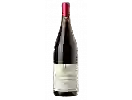
Winery BrestL'Rata du Pére Gill Ratafia
This wine generally goes well with
Details and technical informations about Winery Brest's L'Rata du Pére Gill Ratafia.
Discover the grape variety: Courbu noir
Courbu noir is a grape variety with red and bronze leaves. It originates from the Pyrenean vineyards where it occupies a little more than one hectare. It is completely different from the white Courbu. The adult leaves have five lobes and a petiolar sinus. The berries of the Courbu Noir are round. The berries are small, as are the clusters. The beginning of the veins and the petiolar point are red. The shoots of this grape variety bend to form a parasol. To hope for a significant harvest, it is important to prune it long. Its budburst period begins 3 days after Chasselas. As for its maturity, it is the third period. This variety is very sensitive to oidium, but it does not fear mildew very much. It produces light and fine wines. It is not very colourful and does not contain enough alcohol. Courbu Noir has two approved clones, 728 and 729.
Informations about the Winery Brest
The Winery Brest is one of of the world's greatest estates. It offers 5 wines for sale in the of Loire Valley to come and discover on site or to buy online.
The wine region of Loire Valley
The Loire Valley is a key wine region in western France. It follows the course of the Loire River on its Long journey through the heart of France, from the inland hills of the Auvergne to the plains of the French Atlantic coast near Nantes (Muscadet country). Important in terms of quantity and quality, the region produces large quantities (about 4 million h/l each year) of everyday wines, as well as some of France's greatest wines. Diversity is another of the region's major assets; the styles of wine produced here range from the light, tangy Muscadet to the Sweet, honeyed Bonnezeaux, the Sparkling whites of Vouvray and the juicy, Tannic reds of Chinon and Saumur.
The word of the wine: Astringency
Chemical stimulation that tightens the mucous membranes of the mouth and causes a sensation of harshness, which is characteristic of the presence of tannins. With time, the tannins lose their harshness and become softer.













